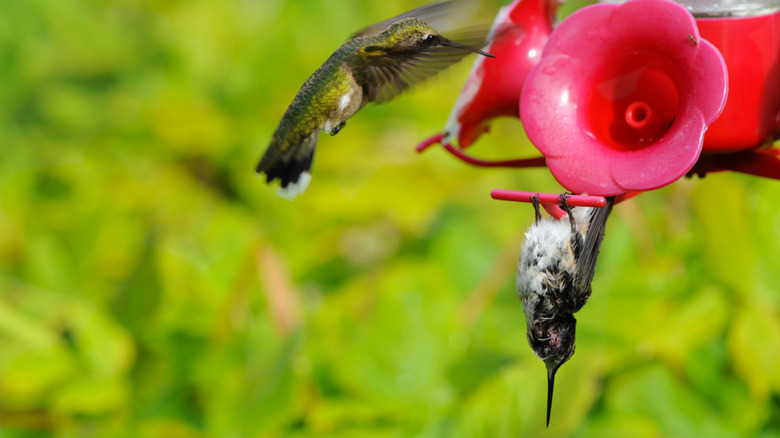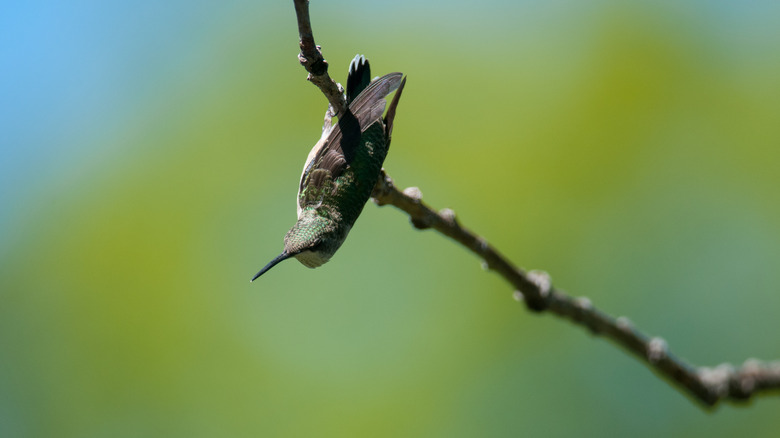What It Means If You Spot Hummingbirds Hanging Upside Down From The Feeders
Hummingbirds are an absolute joy to watch in the garden as their little iridescent bodies zip around your yard flitting from flowers to feeders and back again. If you love watching hummingbirds, then you have probably already done a few things to try and attract more of them to your yard — like adding more red to your garden, putting out your hummingbird feeders at the right time, and adding water features or misters. Also, if you have been watching hummingbirds for a long time, you may have even seen them do some strange and unique things such as hanging from a feeder upside down.
When most people spot a hummer hanging upside down from a feeder by its feet (or, in some cases, by a single foot) with open eyes and a motionless body, they assume it has died. While these birds may look dead, they are actually very much alive and simply resting in a hibernation-like state called torpor. Because hummingbirds have such a high metabolism, and being awake and flying around consumes a lot of energy, they have to be constantly eating when awake in order to get enough energy to support themselves. During periods when hummers aren't consistently consuming calories, like at night, they go into torpor as a way to slow down their metabolism by up to 95% and save precious energy. Although it might look a little silly, being in torpor is quite normal and necessary for these quick-moving tiny birds.
Why a hummingbird might hang upside down in broad daylight
While hummingbirds hanging upside down in torpor isn't super common during the day when food is readily available, it can happen, and the main reason for it is the weather. Hummingbirds often go into torpor to survive the cold weather and freezing temperatures because keeping their bodies warm when the temperature drops requires unsustainable levels of energy. So, instead, they simply hibernate.
Hummingbirds can also go into torpor for very short periods when sitting at your feeder. This tends to happen on cool and wet days in spring when the weather can be unpredictable and there may be a sudden temperature drop. When this happens, a hummer may realize it can't get enough energy to keep itself warm and decides to take a little power nap. Although hummers often go into torpor in an upright position, they are thought to have delicate feet and sometimes slip so that they are hanging upside down. This won't harm them and they will find their power nap just as restorative whether they take it right side up or upside down.
However, one important thing to remember when you find a hummer in torpor is to leave it alone and refrain from touching or moving it. The hummingbird is simply resting, and moving it may be detrimental to its health.

